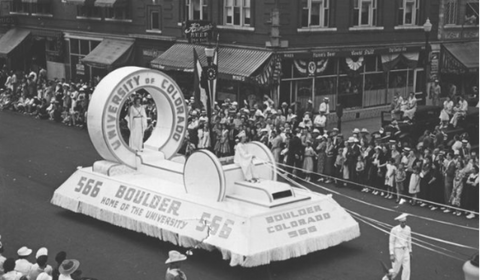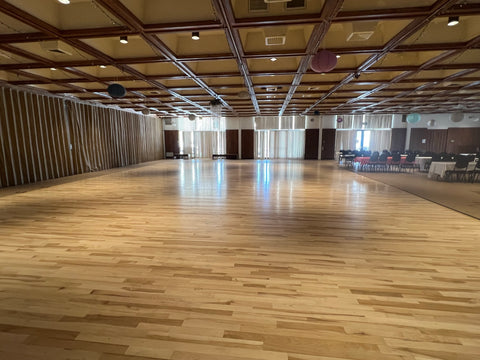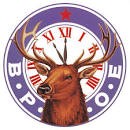Boulder Elks History
Established in 1900, the Boulder Elks Lodge #566 was originally located on the corner of Spruce & 13th Street in downtown Boulder; 9 years before the Hotel Boulderado opened across the street.

In the 1960's, the current 30,000 sf facility and swimming pool was built in a wooded setting on 28th Street in North Boulder. Long a fixture in Boulder as a gathering place for concerts and live events in the 1980’s and 90’s, the Boulder Elks Lodge has provided fond memories for many Coloradoans. Back in the day, the Boulder Elks was the main venue in Boulder for live music, partying, and dancing to bands like the Fornikators, Freddie Henchi and Hazel Miller.
Our Olympic size outdoor swimming pool (with 2 diving boards, including a high dive) has provided a great community resource for young and old since opening. The heated swimming pool is open year-round and used by the Boulder Elks swim team to help the team compete. In the winter, local swim clubs rent the pool.
Home to the ever-popular summertime Friday night Poolside BBQ parties, our pool is open to the public for daily passes and memberships. Free On premise parking is available on our spacious lots.
The Lodge was closed during Covid and then had a flood during the 2022 summer that damaged the main ballroom, dining areas and Lodge room. The entire 10,000 sf area has been extensively cleaned, painted, and thoroughly sanitized.
We replaced the old dance floor with a brand new 3,000 sq. ft. dance floor (one of the largest dance floors at clubs in Boulder County). The hardwood maple surface is spring loaded to ease the impact of dancing on the body. 
The Boulder Elks Lodge provides weekly dinners and entertainment, meeting venues for bridge clubs, book clubs, musicians and more.
Some of our organizations highlights include:
-
Medical Equipment Loan Program (or Medical Loan Closet) which provides complimentary medical equipment for people in the community who need it. People can borrow walkers, wheelchairs, crutches, shower benches and other small pieces of equipment; then return them free of charge when they were done.
- Veterans Support – current work is focused on supporting homeless veterans through the Veterans Community Project ; a tiny home village project in Longmont. The Elks is providing money and resources on this project that provides services vets need to get back on your feet.
-
High School Scholarship Program - The Elks organization as a whole gives more money for high school scholarships to graduating high school seniors that qualify than any other organization in the US; including US government! We also coordinate basketball hoop and soccer shootouts to help kids be involved with athletics and stay off drugs.
- Inexpensive RV parking - Members can take advantage of low rates for overnight RV parking for themselves or guests. Some members rent short term on Air BNB and stay in the RV Park at the Elks while renting their home.
A Brief History of the Origins of the Benevolent Protective Order of Elks (BPOE)
https://youtu.be/tQn3lxZlMVU
The Story, always interesting, is the story of the expansion of a dream of brotherhood into the greatest of American Fraternities.
On Friday, November 15th , 1867, Charles A. Vivian, an English comic singer, landed in New York via an English trading vessel from South Hampton. On the night of his arrival he dropped into the Star Hotel, a “Free and Easy” kept by John Ireland on Lispenard street near Broadway. Richard R. Steirly, also of English birth, was a piano player at the Star Hotel. Vivian struck up an acquaintance with him and volunteered to sing a few songs. H
e made such an impression on John Ireland that the latter sent for his friend, Robert Butler, manager of the “American Theater” on Broadway. Vivian sang for Butler, making such a hit that he was engaged for a three week’s run at the American. When closing time came at the Star Hotel, Steirly took Vivian around to his boarding house at 188 Elm Street, kept by Mrs. Giesman.
There he found a collection of congenial spirits, among them William Bowron, who also knew Vivian in his native land, *** The streets in that section of New York have been re-plotted and their names changed so that the plot known as “188 Elm Street” can now be found on LaFayette Street in the block between Broome and spring Streets. In 1939 the Council of the City of New York passed the following resolution: “Be it resolved… that the two blocks remaining on Elm Street be known as Elk Street to pay tribute to the famous Order of Elks which was founded on that Street in the year 1867.”
On November 23rd , 1867, Dick Steirly went to the American Theater to take notes for the purpose of orchestrating some of Vivian’s songs. After the matinee, Vivian took Steirly over to Sandy Spencer’s place at Broadway and Fulton Street. There they met Hughley Dougherty, Cool Burgess and Henry Vandemark. The latter suggested that the party shake dice for the refreshments. Vivian replied that he never handled the cubes, but would show them a new game.
Calling for three corks he gave one each to Steirly and Vandemark, keeping the other for himself. He asked Cool Burgess to be the judge and Dougherty to count to three. They rehearsed the trick of each dropping his cork on the bar and picking it up as rapidly as possible, several times, the idea conveyed to initiated being that the last man to lift his cork was to buy.
Vivian then gave the word of command, Dougherty counted. He and Steirly passed their hands over their corks while Vandemark, eager to lift his cork from the bar, was both first and last to pick it up, and consequently was stuck for the round. This was the first introduction of a delectable form of amusement which became popular.
Birth of the Jolly Corks
At about this time the Excise Law was being strictly enforced and Sunday in New York City was a very dry day. Devotees of the cork trick formed the habit of congregating at Mrs. Giesman’s on this day to hold social conventions under the inspiring influences of a stock of beer laid in the night before. This little coterie styled itself the “Corks”, with Vivian as the “Imperial Cork”.
The revels of the Jolly crew meeting at Mrs. Giesman’s became disturbing to the other boarders and she finally required them to forego their Sunday gatherings in her house. Quarters were found at 17 Delancy Street, over a saloon kept by Paul Sommers, where the meetings were continued.
The object of the Corks at this time was entirely convivial. It's membership was composed of professional and semi-professional entertainers with a sprinkling of legitimate actors. Among the latter were Thomas Riggs, George McDonald, William Sheppard and George Thompson, a theatrical agent.
When the cork trick was tried on McDonald it amused him so that he called the coterie the “JOLLY CORKS,” and as such it has gone down upon the pages of history. In the latter part of December just before the holidays, they were returning from a funeral of a friend, Ted Quinn, when McDonald suggested that the “Jolly Corks” become a protective and benevolent society.
At the meeting held on the 2nd of February, 1868, presided over by Charles A. Vivian, George McDonald offered a motion to organize the “Jolly Corks” as a lodge along benevolent and fraternal lines and providing a committee be appointed to formulate rules and regulations for it’s government, prepare a suitable ritual, and select a new name.
Vivian having in mind an English organization, “The Royal Antediluvian Order of Buffalos,” but the majority were desirous of bestowing a distinctively American title upon the new organization. A committee visited Cooper Institute Library, where the Brothers found the ELK described in a work on Natural History as an animal “fleet of foot, timorous of doing wrong, but ever ready to combat in defense of self or of the female of the species”. This description appealed to the committee as containing admirable qualities for emulation by members of a benevolent fraternity and the title “ELK” was incorporated in its report.
Birth of the Order of the Elks
On February 16, 1868, the committee reported, recommending that the “Jolly Corks” be merged into the “Benevolent and Protective Order of Elks” and the recommendation was adopted by a vote of eight (8) to seven (7). Listed below are those who voted for what name.
For “BUFFALO”: Charles A. Vivian; Richard Steirly; M.G. Ash; Henry Vandermark; Harry Bosworth; Frank Langhorne; E. W. Platt.
For “ELK”: George McDonald; George Thompson; Thomas Riggs; William Carleton; William Sheppard; George Guy; Hugh Dougherty; William Bowron.
